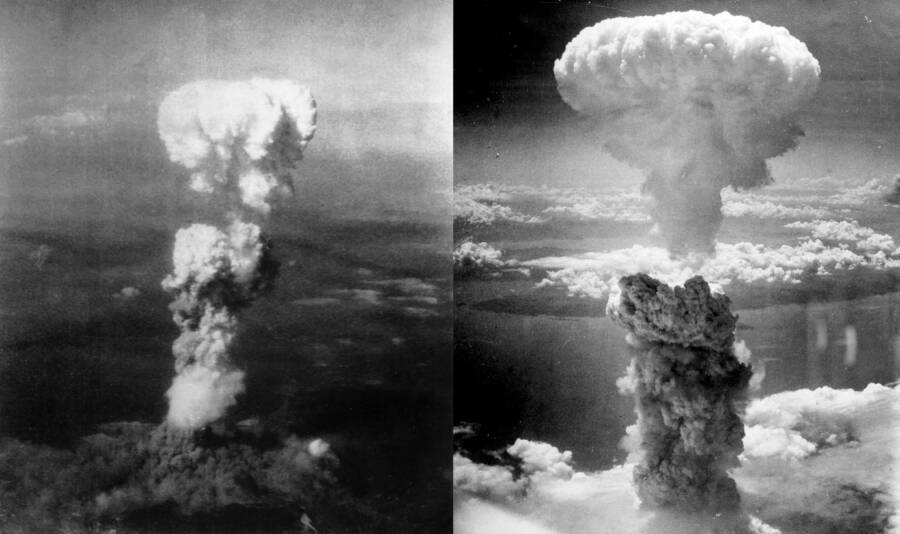The Bombings Of Hiroshima And Nagasaki

Wikimedia CommonsMushroom clouds over Hiroshima (left) and Nagasaki (right) after the United States dropped atomic bombs on them during World War II.
In August 1945, the United States of America dropped two atomic bombs on the Japanese cities of Hiroshima and Nagasaki, leading to unprecedented devastation.
Hiroshima had been an important military base for Japan, a communication hub fortified by anti-aircraft guns. At the time, roughly 40,000 Japanese soldiers were stationed there. By some estimates, the bomb killed as many as 140,000 people, according to the Bulletin of the Atomic Scientists.
Nagasaki faced its own atomic bomb just three days after the first bomb hit Hiroshima. The second bomb killed as many as 70,000 people.
The bombings of Hiroshima and Nagasaki marked a significant turning point in World War II and ushered in a new era of conflict. They showcased the power of the United States military at the time, and sent waves of fear across the world.
And once again, Nostradamus may have seen it coming:
“The heavenly dart will stretch its course
Death in the speaking: a great achievement
The proud nation brought low by the stone in the tree
Rumours of a monstrous human, bring purge, then expiation.”
There are several key parts of this prediction that can be related to the atomic bombs. Given that the bombs fell from the sky and were somewhat dart-shaped, they could be referred to as “heavenly darts.” And while they were indeed devastating, the bombs themselves were hailed by many in the scientific community as “great achievements.”
However, skeptics will naturally argue that any of Nostradamus’ predictions should be taken with a grain of salt, or that the words themselves are often too vague to be connected to any one event.





